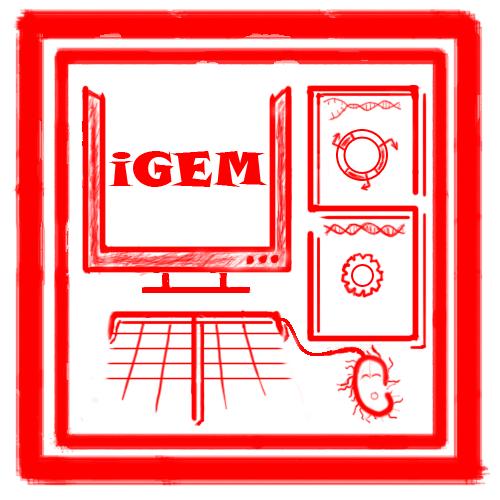|
|
| (9 intermediate revisions not shown) |
| Line 1: |
Line 1: |
| - | =Why= | + | __NOTOC__ |
| | + | {{USTCSW_Heading}} |
| | + | {|- |
| | + | |valign = "top"| |
| | + | {{USTCSW_SideBarL}} |
| | + | |valign = "top" align = "justify" border = "0" width = "600px"| |
| | + | {|- |
| | + | <br /> |
| | + | <font size = "5">Why ABCD?</font> |
| | + | ---- |
| | + | |- |
| | + | |valign = "top" align = "justify" border = "0" width = "600px" bgcolor = "#F3F3F3"| |
| | + | These computational tools (detailed listed in figure below, Figure reproduced from [http://www.nature.com/nrm/journal/v10/n6/abs/nrm2698.html ''The second wave of synthetic biology: from modules to systems'']) are designed to facilitate the scientists in wet lab in purpose of saving time and cost. On the other hand, standardization components provide a powerful tool for engineering biological systems in lab even in future industrial factories. In other words, all the current efforts are put to assist the scientists and could never replace the intelligence of human beings who are the leading roles in designing experiments and mathematical models. |
| | | | |
| - | These computational tools (figure 1) are designed to facilitate the scientists in wet lab in purpose of saving time and cost. On the other hand, no matter synthetic biology standardization or biobricks registry maintenance, they provide powerful tools for engineering biological systems in lab even in future industrial factories. In other words, all the current efforts are put to serve the scientists and could never replace the intelligence of human beings who design the experiments and model.
| + | Is it possible to move further to the steps of intelligence? Is it possible to generate the design protocol and list feasible biobricks? Is it possible to make design of biological networks a funny game even for laymen who know little about synthetic biology? Even not that further, is it possible to suggest different topologies of network that can achieve desired functions? Is it possible to tune an existing network to perform new functions? Is it possible to make a biological network more robust against uncertainties? |
| | | | |
| - | [[Image:USTC_Software.jpg|right|300px|thumb|Computational_Software]]
| + | Another unavoidable challenge is to fill the gap between dry design and wet experiment. Is it possible to guarantee our design solution biologically significant? Is it possible to propose several “strong” examples to illustrate availability and efficiency of our idea? |
| | | | |
| - | Is it possible to move further to the steps of intelligence? Is it possible to generate the design protocol and list feasible biobricks? Is it possible to make a biological networks design a funny game even for laymen who know little about synthetic biology? Not that further, is it possible to suggest different topologies of network that can achieve desired functions? Is it possible to tune an existing network to perform new functions? Is it possible to make a biological network more robust?
| + | Here, we try our best to challenge these seemingly impossibilities and make them possible. We hope our software could be cradle where amazing happens. We don't mean we are on the summit of pyramid of computational synthetic biology and it’s of little significance to say whose work is more important or not. Instead, a vast of collaborations are needed among computational scientists, biologists and engineers. As we described in our flowcharts, ABCs of ABCD, relevant tools are strongly needed to cope with difficulties we meet separately. |
| | | | |
| - | Another unavoidable challenge is to fill the gap between computational design and experiment operation in lab. Is it possible to guarantee our design solution biologically significant? Is it possible to propose several “strong” examples to illustrate efficiency and truthiness of our idea?
| + | [[Image:Computational_Software.png|center|480px|thumb|Computational_Software (Figure reproduced from [http://www.nature.com/nrm/journal/v10/n6/abs/nrm2698.html ''The second wave of synthetic biology: from modules to systems''])]] |
| | + | |} |
| | | | |
| - | Here, we make best endeavor to challenge these seemingly impossibilities and make them possible. We hope our software to be cradle where amazing happens. However, it’s of little significance to say whose work is more important in computational synthetic biology design. Instead, a vast of collaboration is needed between these computational scientists accompanied with traditional biologists and engineers. As we described in our flowcharts, ABCs of ABCD, relevant tools are strongly needed to cope with difficulties we meet separately.
| + | |valign = "top"| |
| | + | {{USTCSW_SideBarR}} |
| | + | |} |
| | + | |} |
| | + | {{USTCSW_Foot}} |
|
|
Why ABCD?
|
These computational tools (detailed listed in figure below, Figure reproduced from [http://www.nature.com/nrm/journal/v10/n6/abs/nrm2698.html The second wave of synthetic biology: from modules to systems]) are designed to facilitate the scientists in wet lab in purpose of saving time and cost. On the other hand, standardization components provide a powerful tool for engineering biological systems in lab even in future industrial factories. In other words, all the current efforts are put to assist the scientists and could never replace the intelligence of human beings who are the leading roles in designing experiments and mathematical models.
Is it possible to move further to the steps of intelligence? Is it possible to generate the design protocol and list feasible biobricks? Is it possible to make design of biological networks a funny game even for laymen who know little about synthetic biology? Even not that further, is it possible to suggest different topologies of network that can achieve desired functions? Is it possible to tune an existing network to perform new functions? Is it possible to make a biological network more robust against uncertainties?
Another unavoidable challenge is to fill the gap between dry design and wet experiment. Is it possible to guarantee our design solution biologically significant? Is it possible to propose several “strong” examples to illustrate availability and efficiency of our idea?
Here, we try our best to challenge these seemingly impossibilities and make them possible. We hope our software could be cradle where amazing happens. We don't mean we are on the summit of pyramid of computational synthetic biology and it’s of little significance to say whose work is more important or not. Instead, a vast of collaborations are needed among computational scientists, biologists and engineers. As we described in our flowcharts, ABCs of ABCD, relevant tools are strongly needed to cope with difficulties we meet separately.
 Computational_Software (Figure reproduced from [http://www.nature.com/nrm/journal/v10/n6/abs/nrm2698.html The second wave of synthetic biology: from modules to systems]) |
|
 Automatic Biological Circuits Design - Team Logo: wanna know more about the hinding metaphors and inspirations in this little red square? Click to check out how much fun this year's iGEM has brought us!
|
|
 Teaching Affair Office, USTC
Teaching Affair Office, USTC
|
|
 School of Life Sicences, USTC
School of Life Sicences, USTC
|
|

Foreign Affair Office, USTC
|
|

Graduate School, USTC
|
|
 School of Information Science and Technology, USTC
School of Information Science and Technology, USTC
|
|
 School for the Gifted Young, USTC
School for the Gifted Young, USTC
|
|

|
 "
"





























